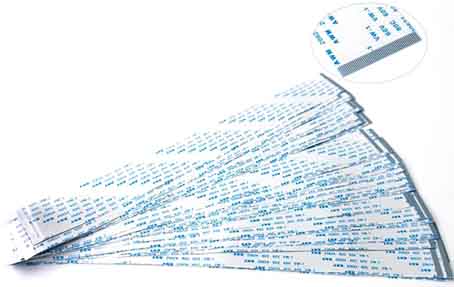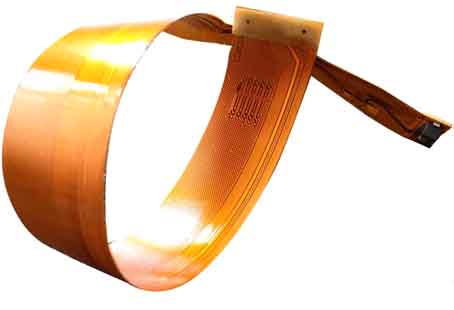Factory customized, Direct sale FPC cable

Flat cable, also called flexible circuit board (FPC). It is used for data transmission in movable parts and active areas in accordance with the regulations of the industry to which it belongs, such as wiring rules, wiring sequence, thread color, and wire number. For example, the internal motherboard of the computer is connected to the data cable of the hard disk and optical drive, and the motherboard of the mobile phone is connected to the data cable of the display screen. The data lines between the connected devices are collectively referred to as flat lines.
Features of flat cable
Flexible flat cable, referred to as flexible cable or FFC, RFC for short. It is a new type of data cable formed by pressing PET or other insulating materials and extremely thin tinned flat copper wires through a production line of high-tech automated equipment. It has the advantages of softness, free bending and folding, thin thickness, small size, simple connection, convenient disassembly, and easy electromagnetic shielding (EMI).
The flexible flat cable is mainly divided into two ends, round ends (referred to as R-FFC, used for direct welding) and flat ends (referred to as FFC, used for plugging in sockets).
It is most suitable for data transmission cables between moving parts and mainboards, between board-to-board, and miniaturized electrical equipment. At present, it is widely used in the signal transmission and board connection of various printers, motherboards, plotters, scanners, copiers, stereos, LCD appliances, fax machines, and various DVD players. In modern electrical equipment, it is almost nowhere.
Because the price of FFC cable is better than FPC (flexible printed circuit), its application will become more and more widespread. In most places where FPC is used, FFC can basically be used instead.

FPC flat cable is small in size and light in weight. The original design of FPC wiring board is to replace the larger wire harness wire. On the current cutting-edge electronic device assembly board, the FPC cable is usually the only solution to meet the requirements of miniaturization and movement. FPC cable (sometimes called flexible printed circuit) is to etch copper circuit or printed polymer thick film circuit on polymer substrate. For thin, light, compact and complex devices, the design solutions range from single-sided conductive lines to complex multilayer three-dimensional assembly. The total weight and volume of the FPC cable are reduced by 70% compared to the traditional round wire harness method. The FPC cable can also increase its strength by using reinforced materials or liners to obtain additional mechanical stability.
The FPC cable can be moved, bent, twisted without damaging the wire, and can comply with different shapes and special package sizes. The only limitation is the volume problem. Because it can withstand millions of times of dynamic bending, the FPC cable can be well applied to the interconnection system of continuous movement or regular movement, and become a part of the function of the final product. The solder joints on a rigid PCB are subjected to thermal and mechanical stress, and will fail after hundreds of cycles. "Requires electrical signals/power to move, and certain products with smaller form factors/package sizes benefit from PCB cables." PCB cable has excellent electrical properties, dielectric properties, and heat resistance: "The lower dielectric constant allows the rapid transmission of electrical signals; the good thermal performance makes the components easy to cool down; the higher glass transition temperature or melting point makes the components run well at higher temperatures."
FPC cable has higher assembly reliability and quality. The FPC cable reduces the hardware required for internal connections. For example, the solder joints, relay lines, backplane lines and cables commonly used in traditional electronic packaging can provide higher assembly reliability and quality.





